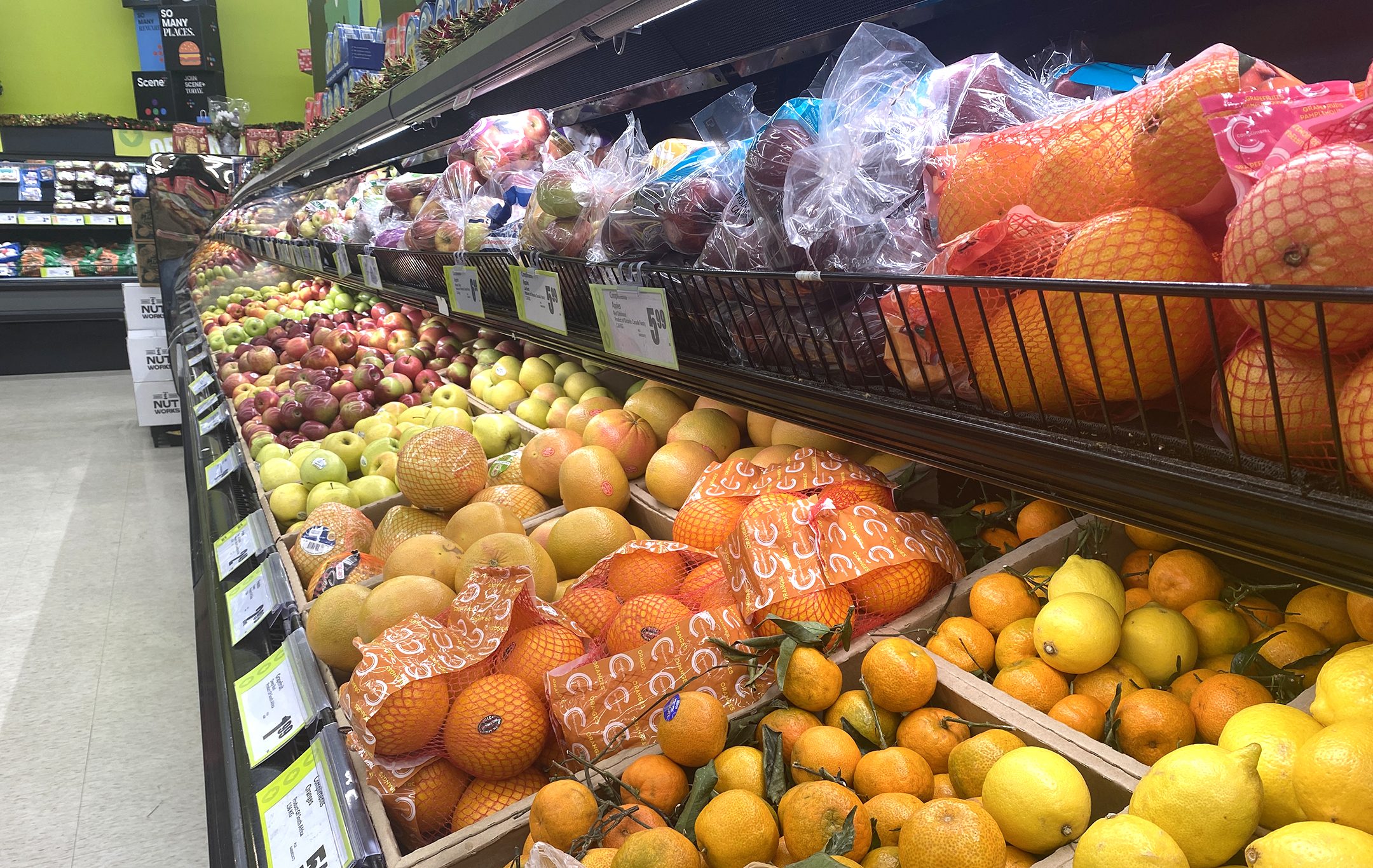GUELPH – Canada’s Food Price Report predicts food prices will increase by 2.5 to 4.5 per cent in 2024.
That means the average family of four will spend $702 more on food next year, according to the report prepared by the University of Guelph (U of G), Dalhousie University, University of British Columbia and the University of Saskatchewan.
Kristina Kupferschmidt is a PhD student at U of G working in the area of understanding how machine learning is being used for real world applications.
She helped with the Guelph team’s machine learning portion of the project.
“Instead of just using the data from Statistics Canada, we really wanted to try to understand how other factors are changing food prices,” she said.
“Food prices are a really complex system.”
Guelph team
Kupferschmidt is new to the Guelph team this year after being taken on by her supervisor, Graham Taylor.
They worked along with Dr. Ethan Jackson, Sara El-Shawa and Cody Kupferschmidt to use machine learning techniques to improve the analytic models that frame the Canada Food Price Report.
Taking a new approach this year, the team identified a series of factors that could impact the price of food, including:
- information on climate (drought, snowpack and weather patterns);
- economics such as employment rates, goods prices and price indices; and
- geopolitics (wars and global conflicts).
Other new strategies involved the use of transformer-based machine learning models similar to the underlying technology used by ChatGPT.
They are used to improve predictions and use ensembles, or the combination of multiple models, to ensure accuracy.
Last year’s report
Predictions from 2023 saw food prices within the expected range.
“Last year, we had predicted a 5 to 7% increase, kind of across the board, and we saw a 5.9% increase,” said Kupferschmidt.
“It’s kind of like, right in the middle.”
She told the Advertiser the only incorrect predictions from last year’s report were bakery products, which cost more than expected, and dairy, which cost less.
“Bakery products were significantly affected by the geopolitical conditions … and geopolitical conditions are notoriously hard to build into models, because they are very nuanced,” said Kupferschmidt.
Factors depend on where conflicts are taking place and who is involved, which is “unpredictable and sporadic,” she added.
Climate is also a factor in the increasing price of food and is expected to impact vegetable and meat prices specifically.
“But really, every category is super unique and I think that’s what makes this project kind of cool,” Kupferschmidt said.
Spending less
While it may come as a surprise to some readers, the report says Canadians reduced the amount spent on food and beverages by 3.26% this year, despite an increase in prices.
“Even though food prices went up by almost 6% last year, people are actually spending [about] $10 per month less on food,” Kupferschmidt said.
“I think the biggest thing is the food prices are changing the way people are behaving.”
Report officials say Canadians “may be reducing either the quality or the amount of food that they are buying, perhaps as a result of other rising costs.”
Kupferschmidt added food banks will also see an increase in clients, and the report states food bank usage is up about 30% from last year.
“I do think food bank need will probably continue to go up until we kind of get this affordability problem under control,” she said.
Final report
The final report for 2024 is based on the country as a whole, but it does include a table that predicts how provinces may deviate from the national average.
Another factor considered in the 2024 report is Bill C-56.
“This bill is designed to promote competition in the grocery sector by empowering the Competition Tribunal to terminate agreements between competitors that undermine competition and by providing the authority to terminate agreements between non-competitors if their intent is to diminish competition,” the report states on page 29.
“The government is trying to get the major grocers to put a grocery code of conduct in place to try and essentially make more competition so more grocery stores can sell food. And that will, in turn, lower prices,” said Kupferschmidt.
For more information and to read the full report, visit arrellfoodinstitute.ca and click “read the report.”




